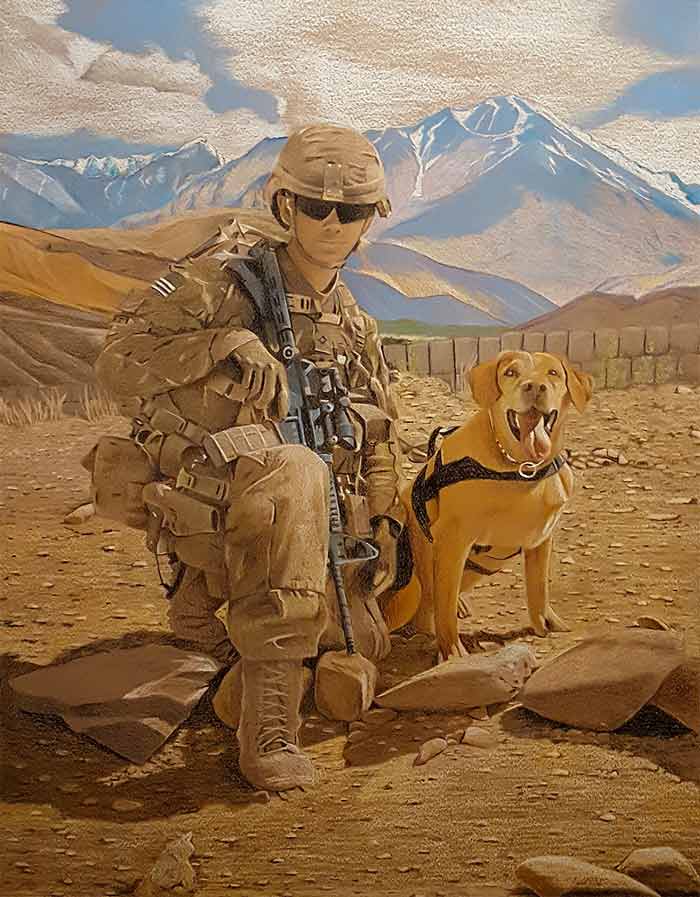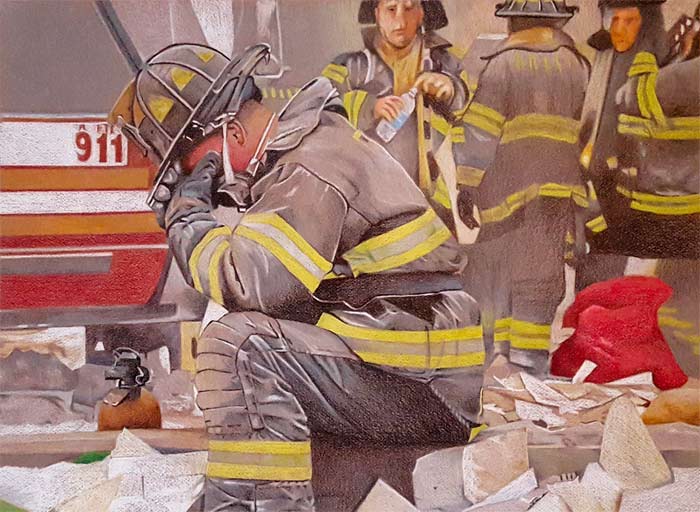

Artwork and story by Charles Gilliam
Random Thoughts
Storytelling is the conveying of events in words, sound and/or images, often by improvisation or embellishment. Stories or narratives have been shared in every culture as a means of entertainment, education, cultural preservation and instilling moral values. Crucial elements of stories and storytelling include plot, characters and narrative point of view. The term ‘storytelling’ is used in a looser sense to refer to techniques used in other media such as paint and color pencil to unfold or disclose the narrative of a story.
“Using art as a storytelling device can be traced as far back as the petroglyphs of North America and the cave paintings in France. Each used images to tell a story even when words are not available. I use the same process with my paintings. When I do a painting I have a story in mind. I think of that story as I execute the painting. Sometimes the story changes as I paint and other times the painting changes as think of the story. But either way they go hand in hand.
But it is the end results that most intrigues me. What is the story you think of when you view one of my paintings? What is in the painting that leads you to write you own story? Is it based on a memory that is triggered by the painting. Is it an object in the painting itself that triggers the story? Each of these triggers and more are hopefully there and allow you to write your own story when you view my paintings. This is my goal, and I strive each time I paint to fulfill that goal.”
In her book, Drawing on the Right Side of the Brain, Betty Edwards stresses that by using the right side of our brain we unleash the creative side of who and what we are. It is my desire that my works do that – unleash the creativity in each of us and we become a storyteller. From that imagined story the world opens up to all kinds of possibilities.
In his book, The Creativity Book, Eric Maisel, in the chapter Aim for a Response, asks us to spend some time examining ourselves and what kind of response do we want from our viewer. He asks us to consider some specific questions like is your work entertaining, is it clever, or is it iconic? Once we answer those questions then we can determine what kind of response we want to elicit from the viewer with each painting created. Each time I begin a painting I ask myself, “Am I telling a story that has only one way of seeing it, or, do I give the viewer an opportunity to tell their own story with my painting as a beginning.”
“When you go out to paint, try to forget what objects are before you, merely think, here is a little square of blue, here is a streak of yellow, and paint it all exactly until it yields your own naïve impression of the scene.”
Claude Monet
“The talent of each artist is the result of his own inspiration and his own study of past tradition.”
Gustave Courbet
“One reason my paintings have become realistic has to do with my interest in what things really look like.”
Robert Bechtle
“We can learn from every journey. Bountiful nature provides for us such a way that everywhere in the world we find something to imitate.”
Leonardo da Vinci
chuckgilliamartist.com




